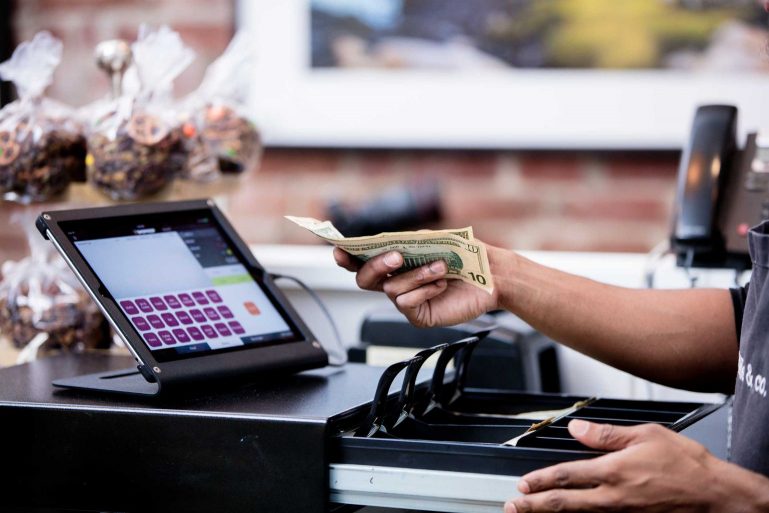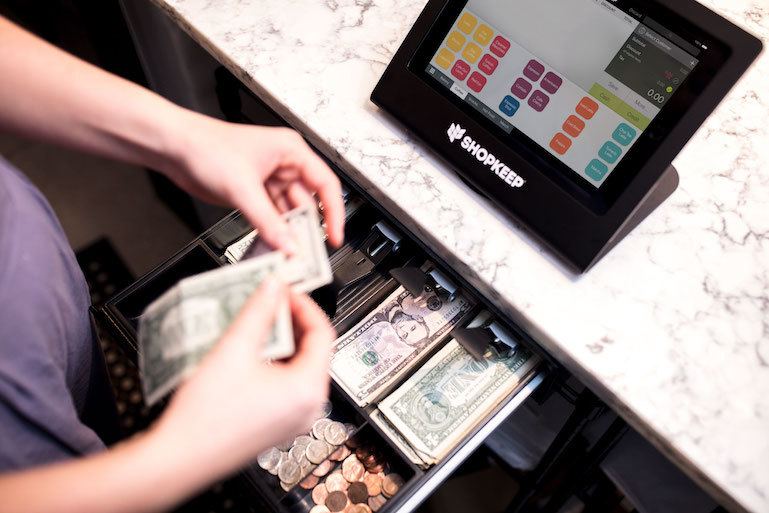
How to Balance a Cash Register Drawer Like a Pro
Balancing your cash register is not at all like balancing a checkbook.
Balancing your cash drawer is as important a part of your routine as unlocking your front door and should be done at least daily. If you’re accustomed to opening your cash drawer, depositing that money, and not thinking twice about it, you’re doing yourself a great disservice. In this post, we break down why it’s important to, and how you can, balance your cash drawer like a pro.
Why should you balance your cash drawer?
As a merchant, you need to be concerned with cash flow within your business, and balancing your cash drawer has to do with all kinds of payment methods including credit cards and checks. Mobile payment methods like Apple Pay are becoming increasingly popular and need to be accounted for as well. Balancing your cash drawer ensures all of the profit your business brings in is accounted for and gives you a clear picture of where your business is financially.
Though you might have the utmost confidence and trust in your employees (perhaps even viewing them as family), it’s important for businesses that deal with cash transactions implement cash-handling procedures. These practices not only protect you as a business owner, but also your staff by holding all parties accountable to what goes in and out of your register. The most important reason you need to balance your cash drawer is to prevent shortages due to inaccurate cash handling or theft. But you also want to make sure that your staff is providing sufficient change to customers and that you never have too much cash on hand.

Have One Person Per Drawer, If Possible
For smaller businesses with only one register, this might not be possible, but limiting the number of people responsible for each cash drawer is always ideal. The more people that have access to a drawer or even a drawer key at any given time, spreads accountability thin for the contents of that drawer. It also makes it difficult to pinpoint the individual responsible for any mishandled or missing cash. However, unlike traditional cash registers, iPad POS systems offer settings that can help monitor and pinpoint which employees performed which transactions. If you’re using ShopKeep, each sale triggers the POS system to automatically update sales data so it’s easier to be aware of the way how funds travel within your business.
SEE ALSO: A 6 Step Guide for Deciding How Much to Pay Your Staff
Start by Counting the Cash
Now that we’ve got you caught up on why balancing your cash register is important, let’s discuss how to do so. A key point to remember is that balancing your cash drawer is as much about what you do first thing in the morning, as what you do at the end of the day. What does that mean? You must always always always start your day by counting the already-existing cash in your till.
Traditionally, as a merchant, you want to keep a consistent base amount of money in your register. This ensures that you’ll always have enough cash to give change to your customers. From a customer’s perspective, nothing is more annoying than handing over a twenty-dollar bill only to be told by the clerk that they don’t have enough money to make change. Not only is this inconvenient for patrons, but it can also prevent you from making a sale.
Though the exact amount might vary from business to business, make sure to have cash, sometimes referred to as petty cash, on-hand in the morning. For a small business, $100 to $150 should be more than enough. A good rule of thumb is to keep at least $20 in five-dollar bills and $20 in one-dollar bills.

Deposit Cash Throughout the Day
The next step in keeping a tidy cash register is to deposit cash throughout the day. Again, depending on the volume and size of your transactions, the number of deposits you will make will vary. In general, you want to choose a slower time of day, so if you’re a hopping lunch joint, noon probably is not the best time for you to be opening and counting cash from your till.
After determining when you will be making this deposit, count your cash and remove the difference from your initial morning count. Having two people witness the count, confirm the amount, and see the money deposited into your safe is also important. So whether that is the store owner and manager, or the manager and a top-notch employee, two sets of eyes for this kind of cash drawer management will ensure a level of checks and balances within your business.
SEE ALSO: Loss Prevention: Your Key to Stopping Shoplifting
Determine Your End-of-Day Balance
The end of the day is when all the hard work you invested in maintaining a tiptop register comes to fruition. Now is the time to view the fruits of your labor and ensure that the money that was taken in during the day and that went out was done efficiently and honestly.
The first step in doing this is to count the total amount in your till. This includes any credit card transactions, cash, and checks. After you’ve finished adding up the amounts, you should compare the number you came up with manually with what is displayed in your POS system. If the amounts match, you’re golden! If they don’t, you have a bit of digging to do. Small discrepancies are common and are usually caused by human error, possibly when a cashier was counting out change to a customer. It’s the larger more glaring discrepancies that you’ll need to take a closer look at.
There are a few different kinds of discrepancies that you need to be on the lookout for, both overages and shortages. Overages are when the amount in your register is more than your POS system says you should have. Shortages, however, are where your POS system says you should have a certain amount of cash, but your till comes up short. Establish a policy for your staff to follow when it comes to handling cash and display it where staff can easily view it to keep everyone accountable and uniform at the register.
When it comes down to it, neither are ideal, but overages can be more damaging to the brand of your business. While shortages mean that cash was either lost, stolen, or too much was given back to customers, excess cash means that money was withheld from customers and adequate change was not returned. Though not done on purpose, an overage at the end of the day means your customers have been shortchanged. When a customer realizes this happens, you might not only lose additional sales from them, but you might also accrue a negative online review and/or word of mouth. As a rule of thumb, merchants should always do everything in their power to prevent overages from happening.
Put Your Cash Register on an iPad. Get Your Business to the Next Level with ShopKeep
Congratulations, you now understand how to balance a cash register drawer like a pro. You now have all of the knowledge and cash management solutions you need to make sure your cash drawer checks out correctly between shifts and before you close out at the end of the business day
Want to try ShopKeep for yourself?
Just answer a few easy questions.
Need help finding the right point of sale?
Just complete the form. We’ll call you right back to explain how ShopKeep can work for you.
Hit the ground running.Sprinting, in fact!
Read our free, comprehensive guide, Small Business 101, to learn all you need to know about starting a thriving business.

